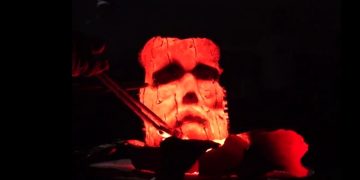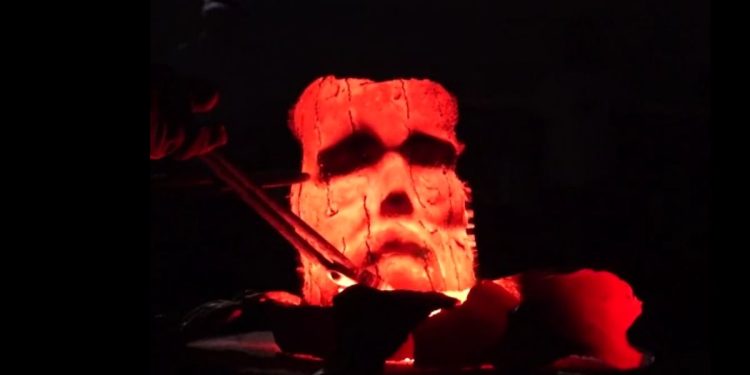The American left’s indiscriminate and self-righteous war on history has continued in secret.
According to The Washington Post, a statue of Confederate Gen. Robert E. Lee that once stood in Charlottesville, Virginia, has been melted down as part of the “Swords Into Plowshares” project.
The project’s leaders congratulated themselves as they oversaw the statue’s destruction, which took place at an undisclosed location on Saturday.
Andrea Douglas, executive director of Charlottesville’s African American Heritage Center, gleefully watched as the statue melted.
“Well, they can’t put Humpty Dumpty back together again,” Douglas said. “There will be no tape for that.”
Jalane Schmidt, professor of religious studies at the University of Virginia, organizes the “Swords Into Plowshares” project with Douglas.
“We want to transform something that has been toxic in the Charlottesville community,” Schmidt said, according to NPR.
“We want to transform it into a piece of art that the community can be can be proud of, and gather around and not feel excluded or intimidated.”
Charlottesville’s Robert E. Lee statue has met its end, in a 2,250-degree furnace.
The divisive Confederate monument, the focus of the deadly “Unite the Right” rally in 2017, was secretly melted down and will become a new piece of public art.
More on the process:… pic.twitter.com/XatZUfvku3
— The Washington Post (@washingtonpost) October 26, 2023
The Lee statue came to national attention during clashes between extremist groups in the summer of 2017. Those clashes featured detestable neo-Nazis and their ideological allies on one side, and detestable antifa and Black Lives Matter activists and their ideological allies on the other side.
Amid so much concentrated hatred, reasonable voices who tried to understand or explain the statue’s meanings got lost.
One problem, of course, lay in revisionist histories of the Civil War.
As a former professor who specialized in early U.S. history and taught both undergraduate and graduate courses for more than 20 years, I am perfectly convinced that the Confederacy fought first and foremost to defend the institution of slavery.
The documentary record on this front leaves no room for doubt. Confederate Vice President Alexander Stephens’ 1861 “Corner Stone” speech will serve as a representative example.
Likewise, post-Civil War Southern memoirs and mythology did much to sanitize the war’s origins. With national reconciliation a priority, Americans suddenly recast the wartime Southern cause as a defense of “states’ rights.”
Furthermore, every honest historian and citizen must recognize that the appearance of Confederate statues across the South in the early 20th century coincided with the triumph of racial segregation.
Failure to acknowledge any of these historical truths would only weaken one’s position.
With that said, the gleeful destruction of the Lee statue strikes me as a hideous episode.
Apparently, to those who destroyed it, that statue could have only the meaning they and the early 20th-century segregationists attached to it.
Had they destroyed a statue of, say, Confederate general and Ku Klux Klan Grand Wizard Nathan Bedford Forrest, not many could have seriously complained.
Robert E. Lee, however, was not Nathan Bedford Forrest.
In fact, in April 1861, prior to Virginia’s secession, President Abraham Lincoln offered Lee command of Union forces. Lee, of course, declined, but he did so on the grounds that he could not fight the people of his home state.
“If Virginia stands by the old Union,” Lee said in his letter resigning from the U.S. Army, “so will I.”
“But if she secedes (though I do not believe in secession as a constitutional right, nor that there is sufficient cause for revolution), then I will follow my native State with my sword, and, if need be, with my life.”
Thus, Lee hardly rated as a fire-eating defender of slavery. In fact, surviving evidence suggests that he hated slavery on moral grounds and probably freed most of his slaves before the war.
In light of all this, have we lost the capacity for discernment? Can there be any doubt that Lee acted from a sense of duty? Even if we think he made the wrong choice, can we impugn his primary motive?
Might there be something about Lee that preserves an aspect of Southern heritage worth celebrating?
But we cannot ask such questions. After all, nuance threatens the moral certitude that radicals crave. It makes them feel better, morally superior, if they simply destroy.
During the summer of 2020, we watched as Marxist BLM radicals reenacted China’s Cultural Revolution. They defaced or destroyed anything that marked our shared history, for good or ill.
Indeed, we might have more sympathy for the removal of Confederate monuments if we had not also seen the radicals’ destruction visited upon statues of George Washington, Thomas Jefferson, Abraham Lincoln and even the all-black 54th Massachusetts regiment.
The self-righteousness with which Douglas and Schmidt melted down the Lee statue thus conjures in our minds a different meaning than the one they insist upon.
Schmidt, for instance, envisioned turning the melted statue into “a piece of art” that would leave no one feeling “excluded or intimidated.”
In a broad sense, of course, hateful exclusion and intimidation did drive many segregationists to erect Confederate statues in the first place.
Alas, Schmidt and others apparently fail to see the same hatred in those who have targeted the monuments. Perhaps the statue-melters were too busy congratulating themselves to notice such things.
The alternate explanation is that they noticed the Maoist orgy of 2020 and sympathized with it.
Either way, it seems never to have occurred to them to differentiate between one Confederate statue and another. Thus, they also seem not to have considered that certain statues might mean different things to different people.
Some might call that bigotry.
This article appeared originally on The Western Journal.


























 Continue with Google
Continue with Google